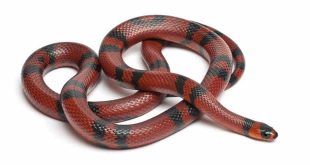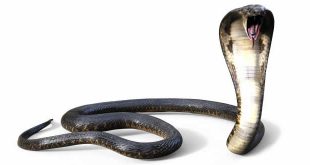 Chameleon — Chameleons (family Chamaeleonidae) are squamates that belong to one of the best-known lizard families. The name “chameleon” means “Earth lion” and is derived from the Greek words chamai (on the ground, on the earth) and leon (lion).
Chameleon — Chameleons (family Chamaeleonidae) are squamates that belong to one of the best-known lizard families. The name “chameleon” means “Earth lion” and is derived from the Greek words chamai (on the ground, on the earth) and leon (lion).
Chameleons vary greatly in size and body structure, with total length from approximately 1 inch (2.5 cm) in Brookesia minima, to 31 inches (79 cm) in the male Furcifer oustaleti . There is a species, thought to be unique to Malawi’s Mount Mulanje, which is 0.6 in (1 cm) across when fully grown[citation needed]. Many have head or facial ornamentation, such as nasal protrusions, or horn-like projections in the case of Chamaeleo jacksonii, or large crests on top of their head, like Chamaeleo calyptratus. Many species are sexually dimorphic, and males are typically much more ornamented than the female chameleons.
Chameleon species have in common their foot structure, eyes, lack of ears, and tongue.
Chameleons are zygodactyl: on each foot the five toes are fused into a group of two and a group of three, giving the foot a tongs-like appearance. These specialized feet allow chameleons to grip tightly to narrow branches. Each toe is equipped with a sharp claw to gain traction on surfaces such as bark when climbing. The claws make it easy to see how many toes are fused into each part of the foot: two toes on the outside of each front foot and three on the inside, and the reverse pattern on each hind foot.
Their eyes are the most distinctive among the reptiles. The upper and lower eyelids are joined, with only a pinhole large enough for the pupil to see through. They can rotate and focus separately to observe two different objects simultaneously. It in effect gives them a full 360-degree arc of vision around their body. When prey is located, both eyes can be focused in the same direction, giving sharp stereoscopic vision and depth perception.
They lack a vomeronasal organ. Also, like snakes, they do not have an outer or a middle ear. This suggests that chameleons might be deaf, although it should be noted that snakes can hear using a bone called the quadrate to transmit sound to the inner ear. Furthermore, some or maybe all chameleons, can communicate via vibrations that travel through solid material like branches.
Chameleons have very long tongues (sometimes longer than their own body length) which they are capable of rapidly extending out of the mouth. The tongue extends out faster than human eyes can follow, at around 26 body lengths per second. The tongue hits the prey in about 30 thousandths of a second. The tongue has a sticky tip on the end, which serves to catch prey items. The tongue’s tip is a bulbous ball of muscle, and as it hits its prey, it rapidly forms a small suction cup. Once the tongue sticks to a prey item, it is drawn quickly back into the mouth, where the chameleon’s strong jaws crush it and it is consumed. Even a small chameleon is capable of eating a large locust or mantis.
Tongue structureUltraviolet light is part of the visible spectrum for chameleons. Chameleons exposed to ultraviolet light show increased social behavior and activity levels, are more inclined to bask and feed and are also more likely to reproduce as it has a positive effect on the pineal gland.
The main distribution of Chameleons is in Africa and Madagascar, and other tropical regions, although some species are also found in parts of southern Europe and Asia. There are introduced, feral populations of veiled and Jackson’s chameleons in Hawaii and isolated pockets of feral Jackson’s chameleons have been reported in California and Florida.
Chameleons inhabit all kinds of tropical and montane rain forests, savannas and sometimes semi-deserts and steppes. They are mostly arboreal and are often found in trees or occasionally on smaller bushes. Some smaller species live on the ground under foliage.
 Kids Portal For Parents India Kids Network
Kids Portal For Parents India Kids Network


